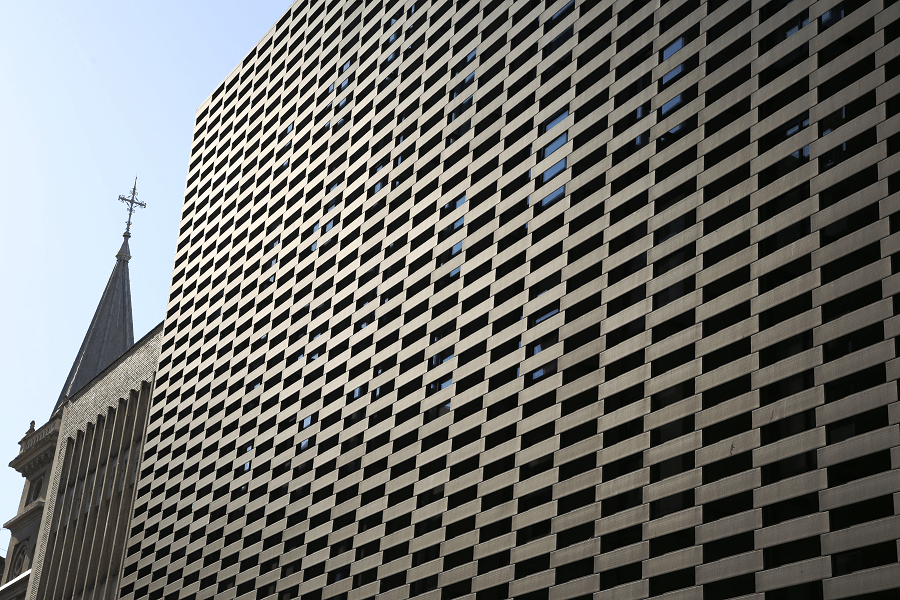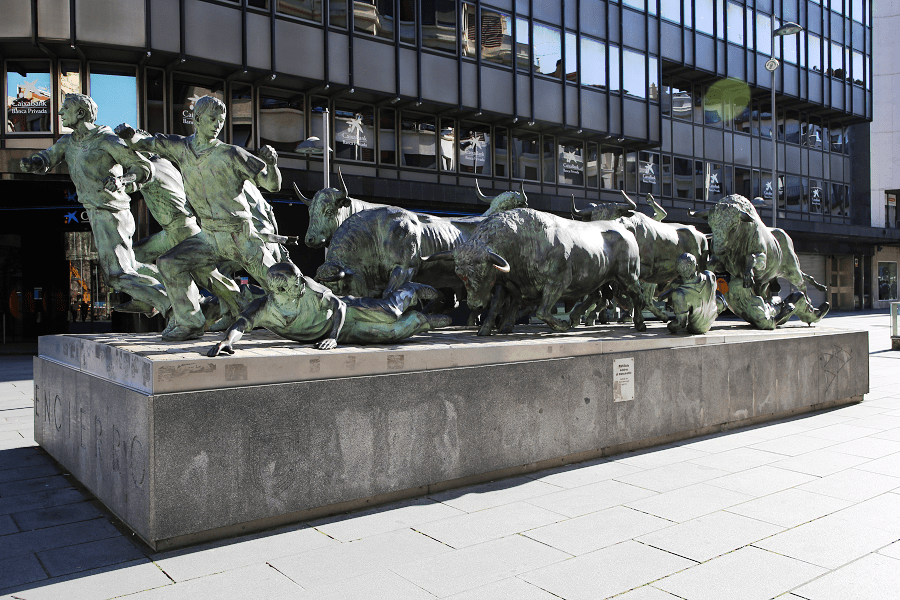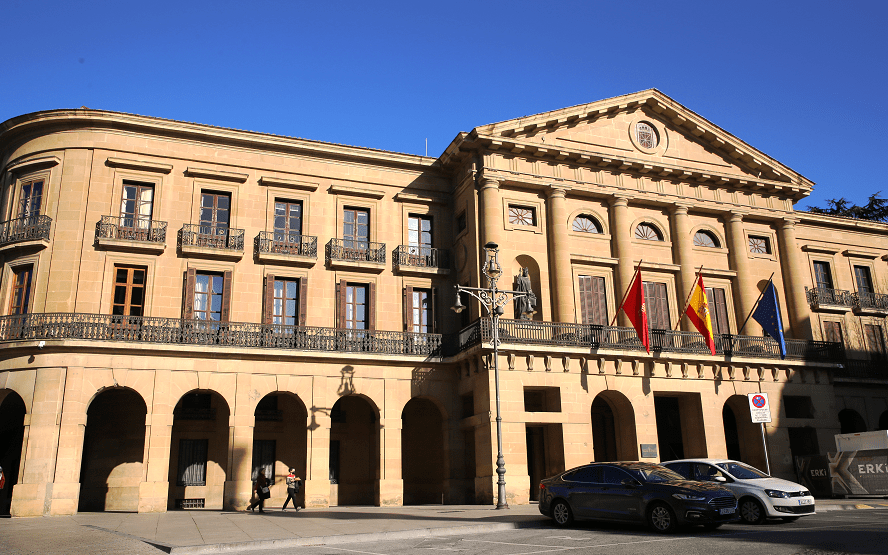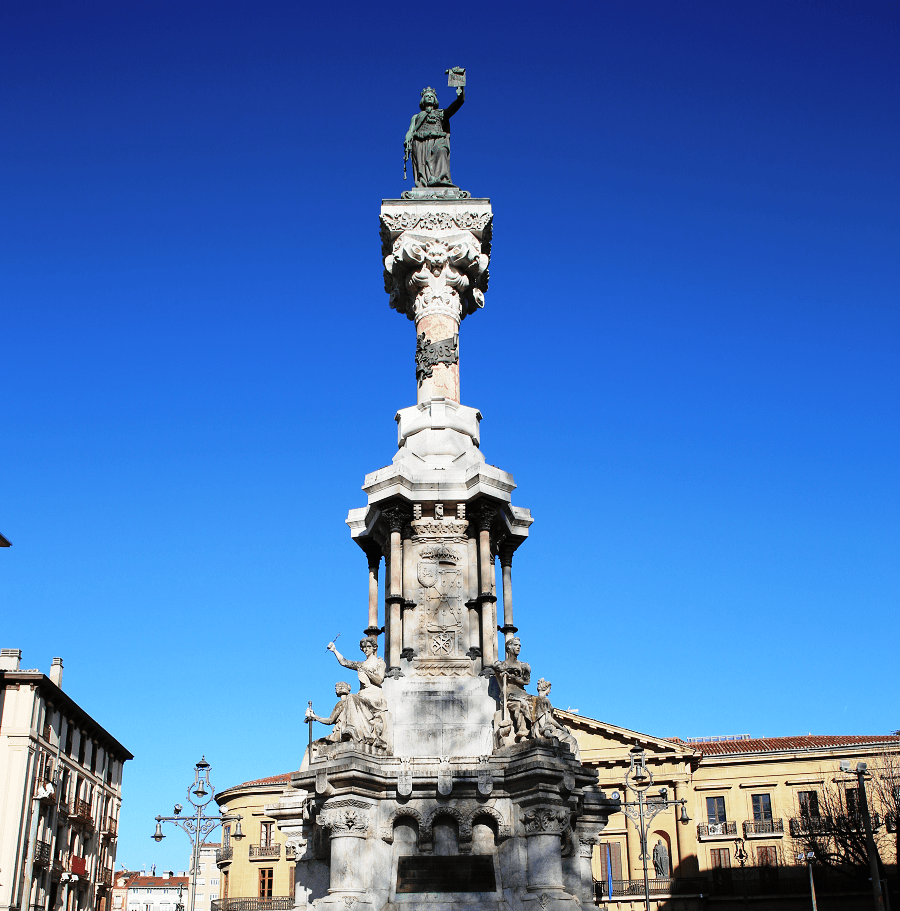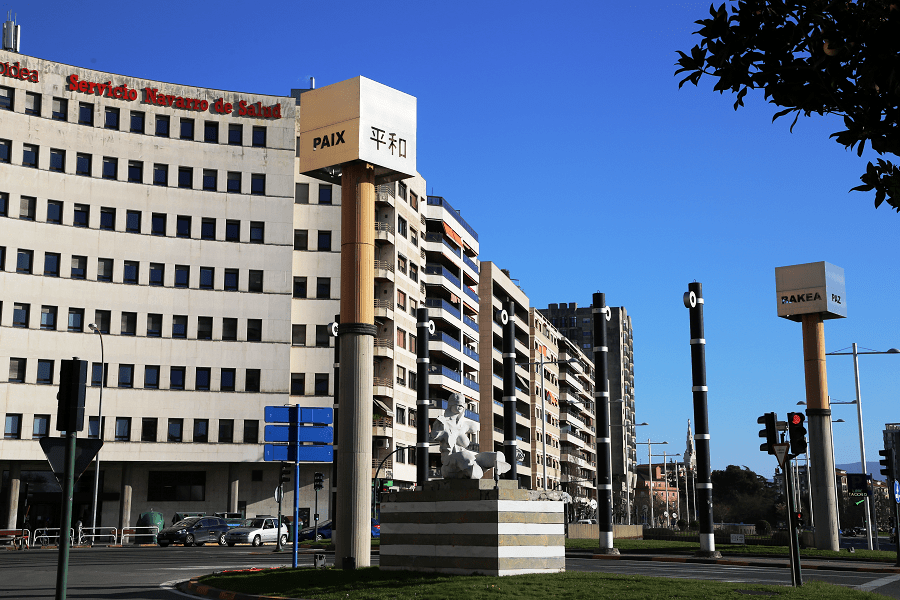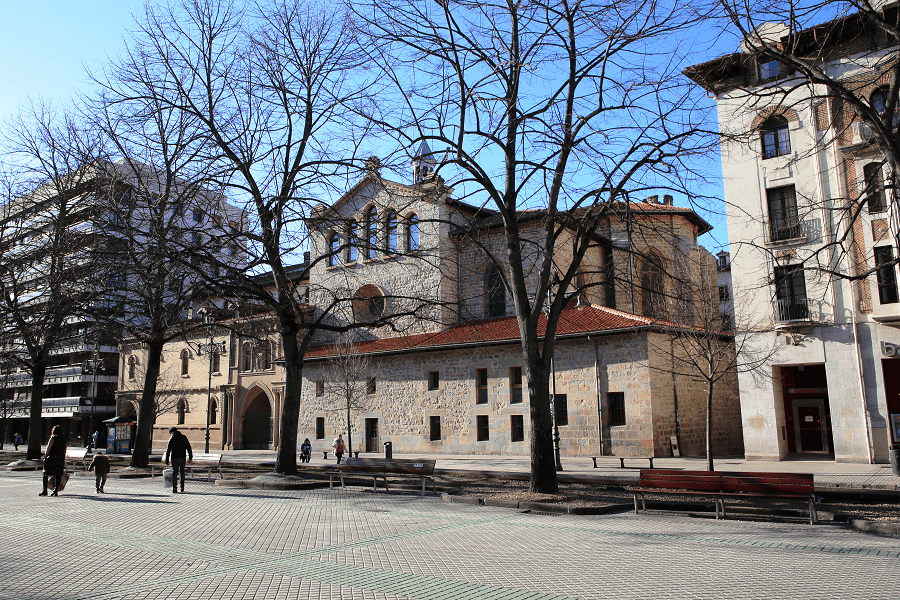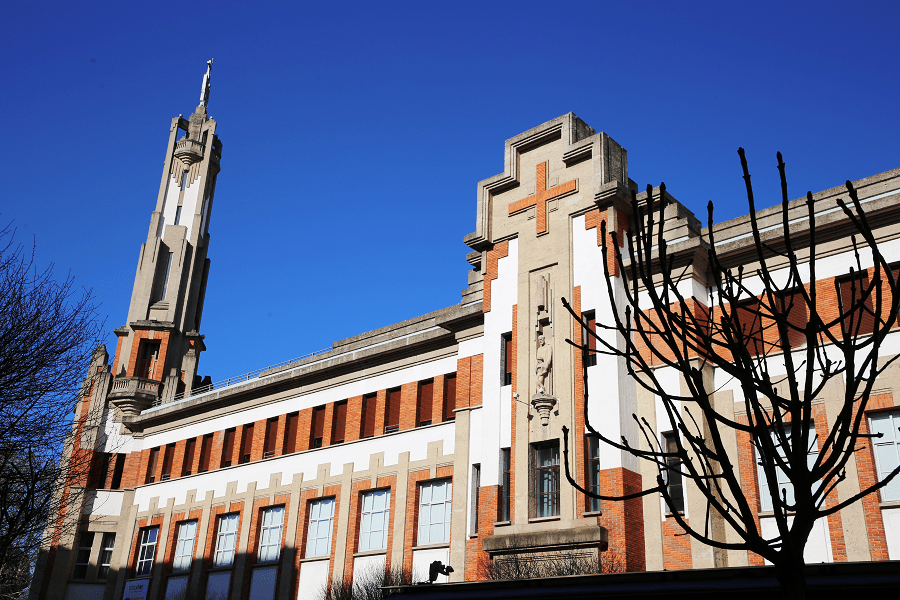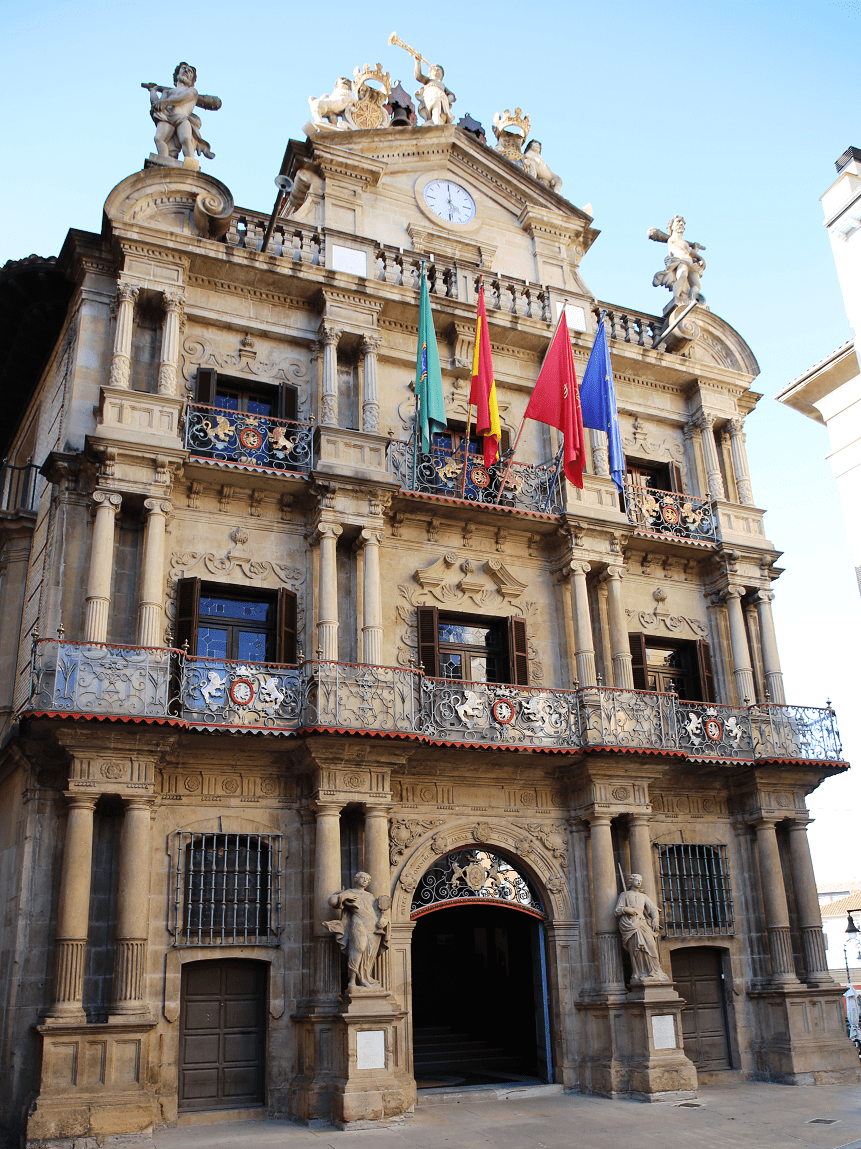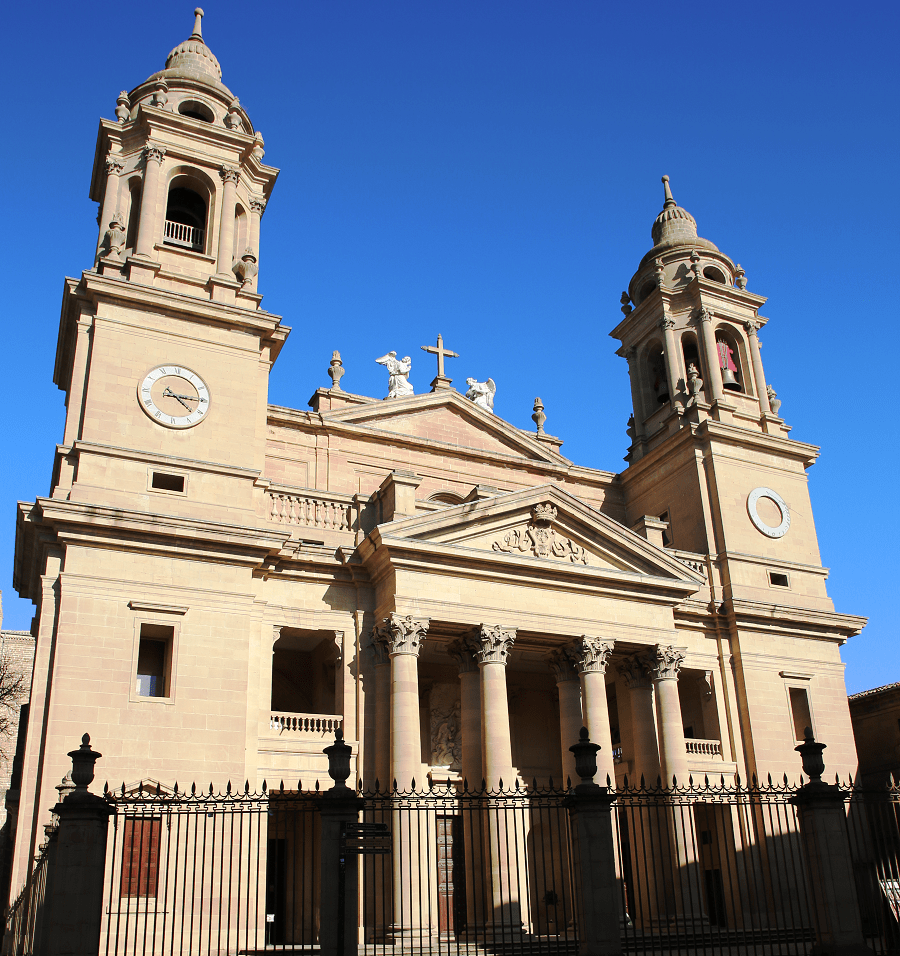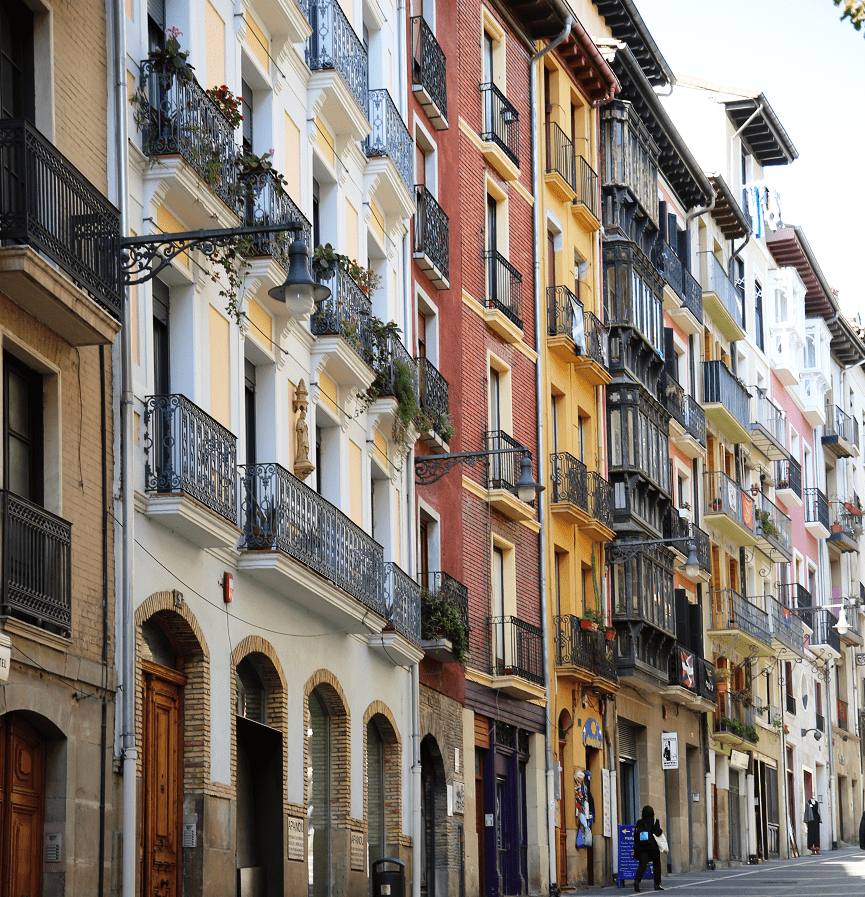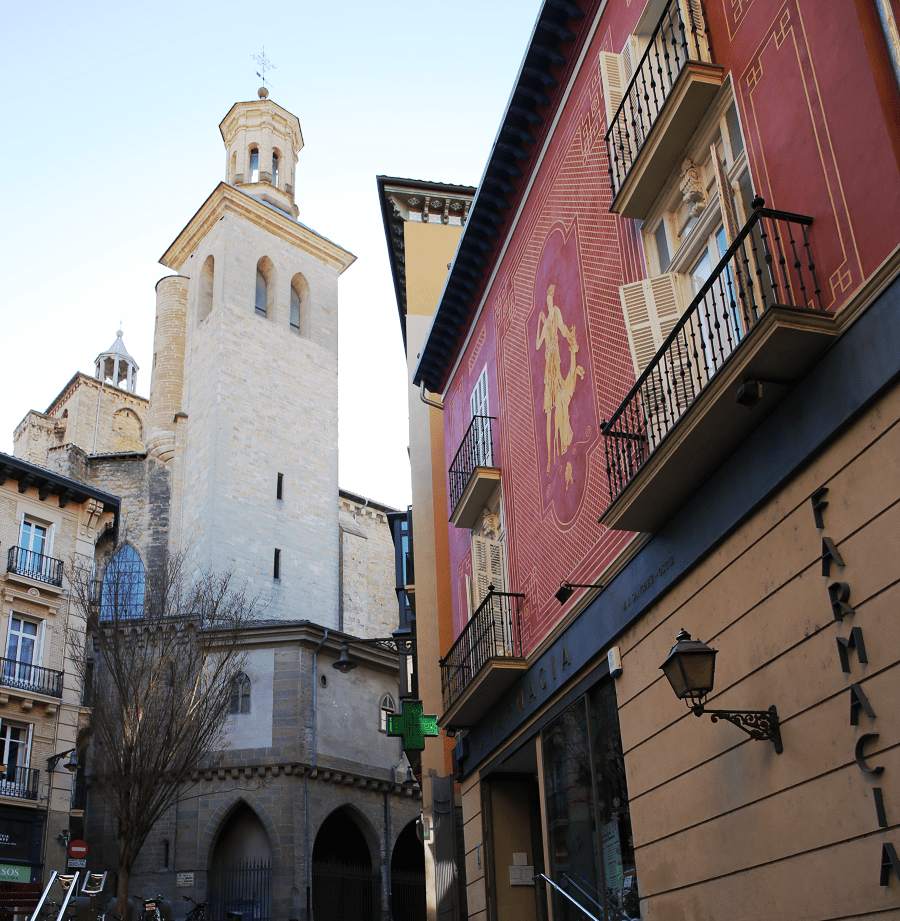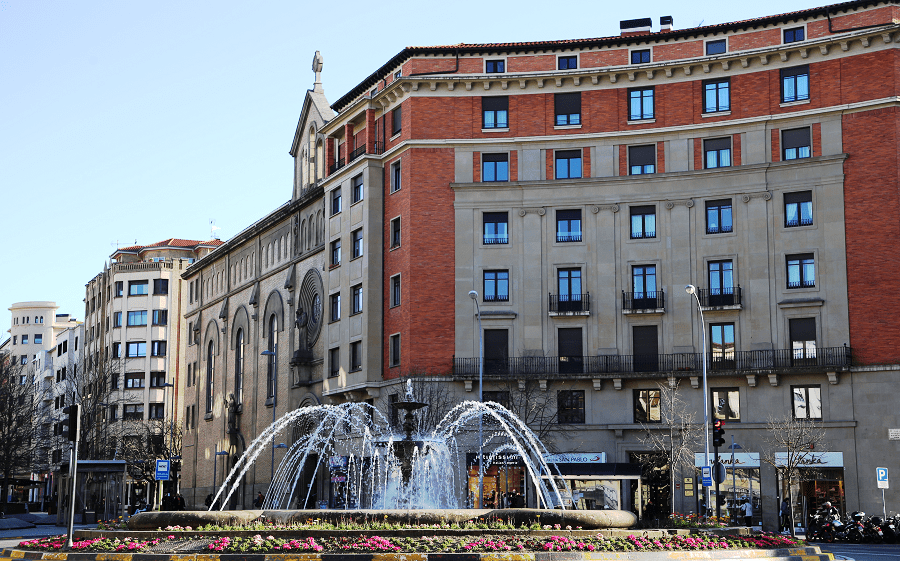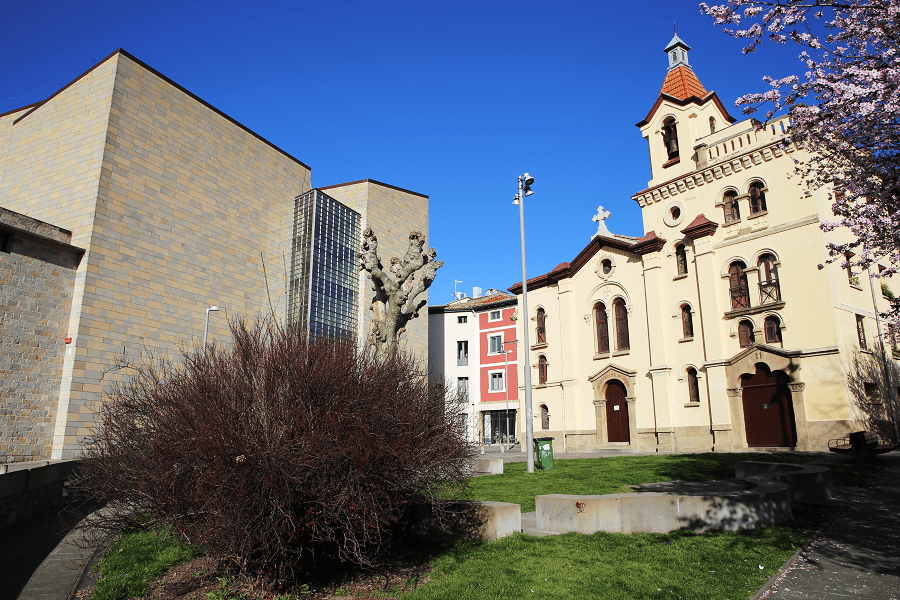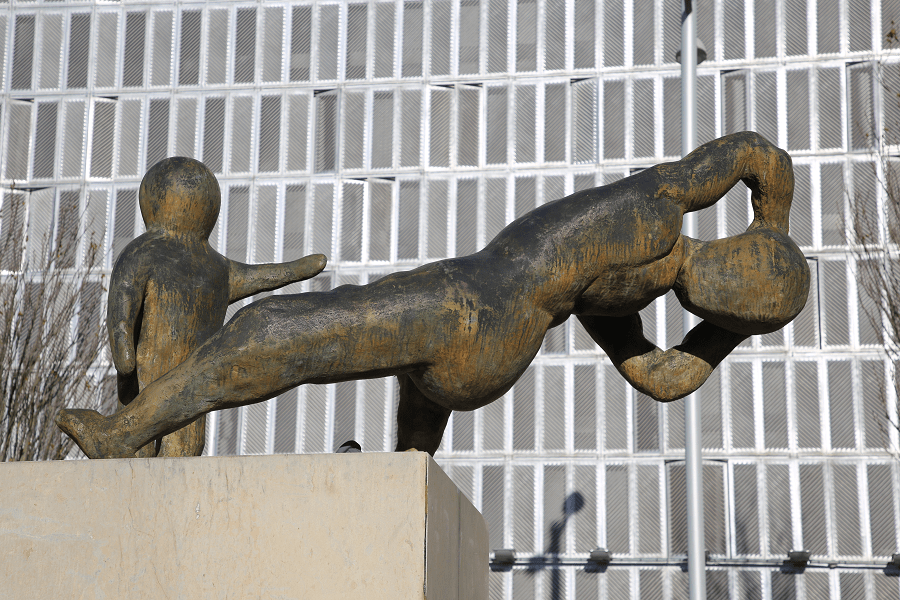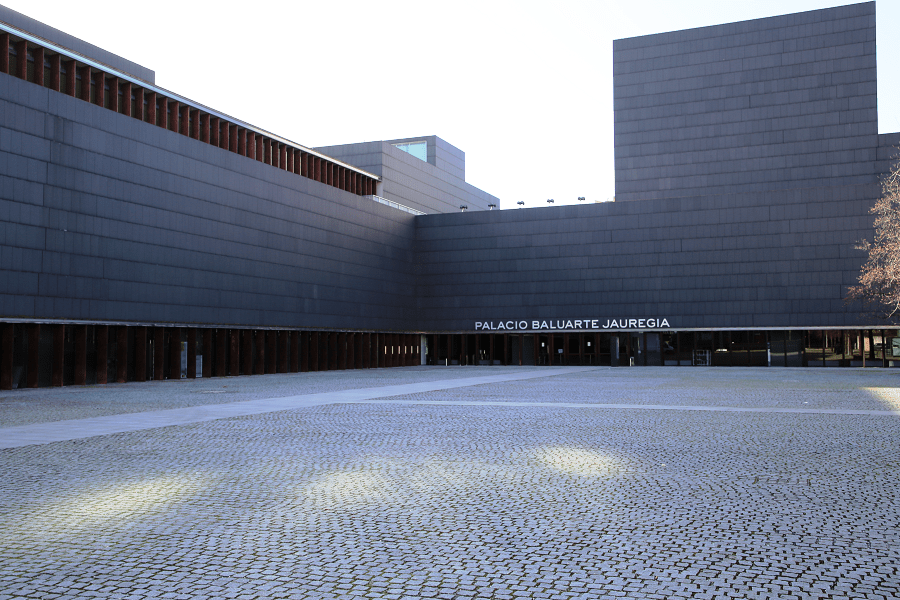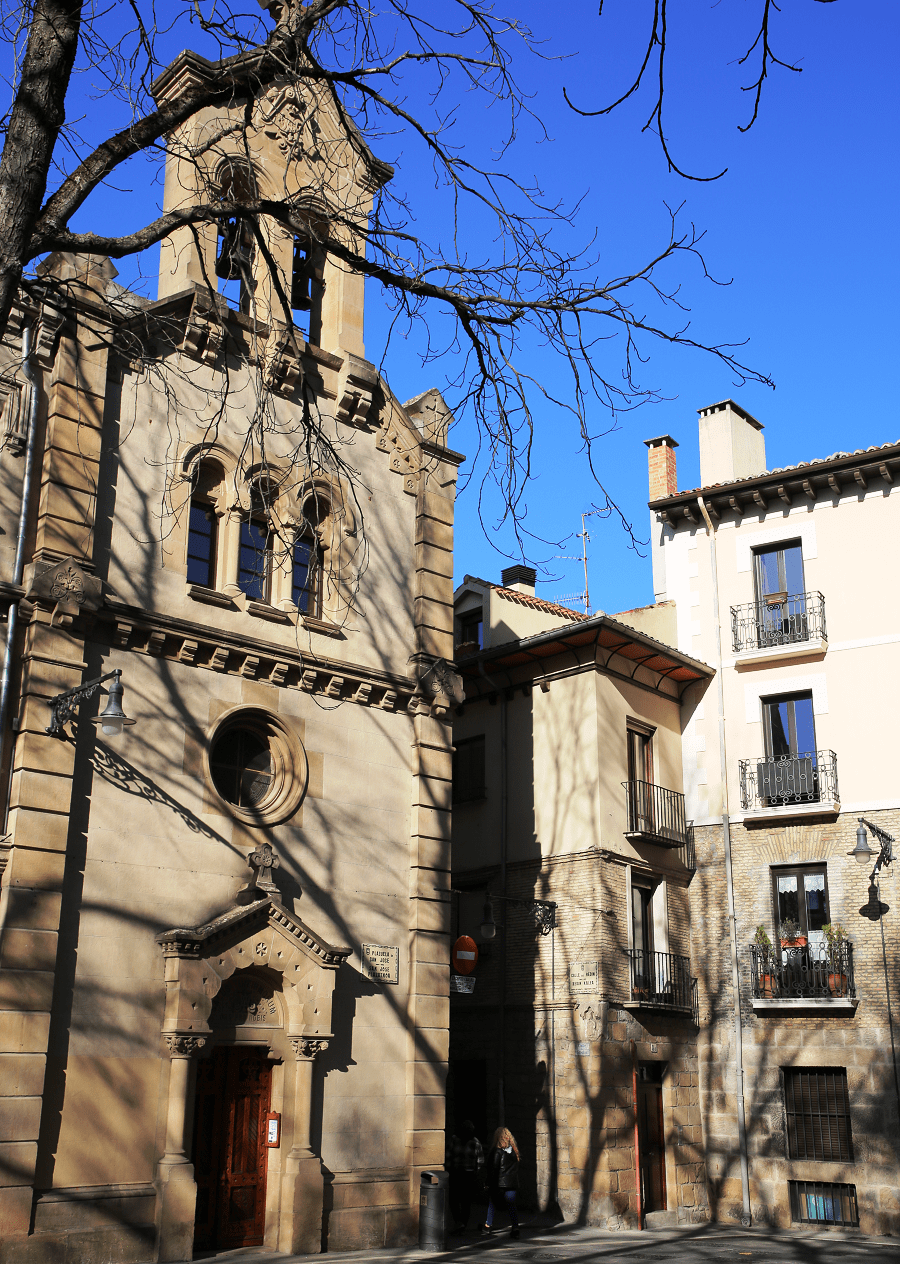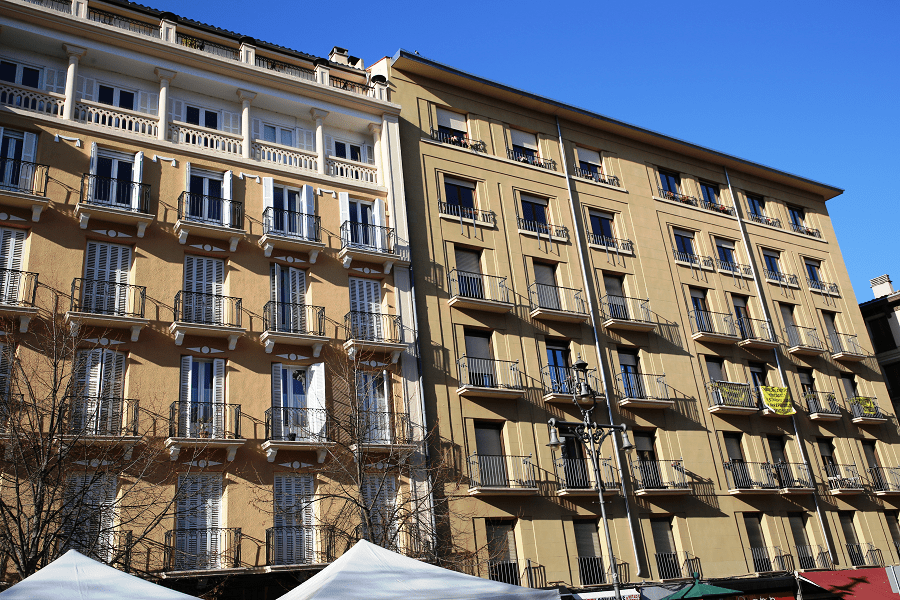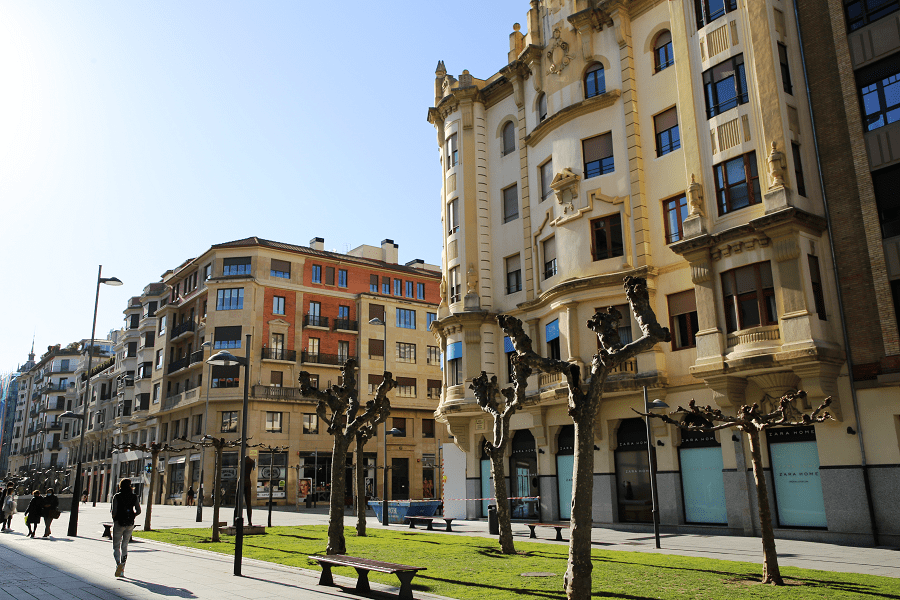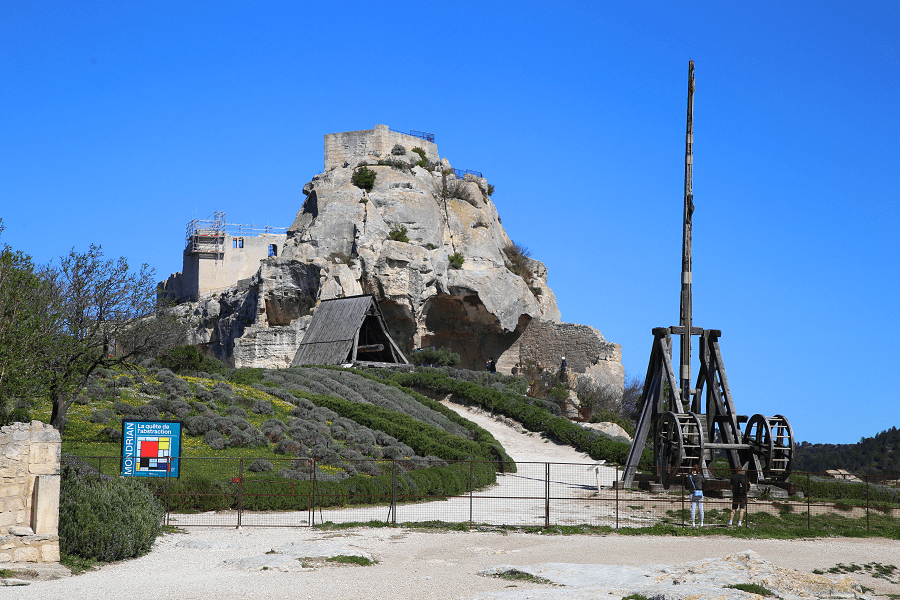Pamplona (coofficially in Basque: Iruña) is a municipality and city, capital of Navarre, Spain.
It is the financial and commercial center of Navarre, as well as being the administrative center of the community because it is the seat of the institutions of the regional administration and the territorial administration of the State.
It is also an important center of industrial activity, specialized in the activities of production of construction materials, metallurgy, paper and graphic arts, and processed meat. The Volkswagen automobile company, located in the Landaben industrial estate, is the industrial factory that generates the most jobs in the Pamplona basin, with a workforce of approximately 5,000 workers in 2020.
According to the Mayor of the city Enrique Maya, Pamplona is also the largest centre for biomedical research.
It also highlights the commercial activity, both wholesale and retail.
The city has three university centers: the University of Navarre (since 1952), the Associated Center of the National Distance Education University – UNED (since 1973) and the youngest Public University of Navarre (since 1987).
Among its most representative monuments are the Cathedral of Santa María, the Church of San Saturnino, the Church of San Nicolás, the Citadel or the Chamber of Accounts, all of which have been declared Assets of Cultural Interest.
The city is an important stop on the Camino de Santiago.
Running of the bulls
The San Fermines bull festival, of international fame, stands out, filling its streets with thousands of foreigners from all over the world. The festivities begin with the launch of the chupinazo (rocket) from the balcony of the town hall at noon on July 6, and end at midnight on July 14 with Pobre de mí, a farewell song. Their worldwide fame is a recent phenomenon, also linked to the spread that Ernest Hemingway gave them with his novel The Sun Also Rises.
Main attractions
Religious architecture
Pamplona Cathedral (Santa María de la Asunción) is a Roman Catholic church in the archdiocese of Pamplona, Spain. The current 15th century Gothic church replaced an older Romanesque one. Archaeological excavations have revealed the existence of another two earlier churches. The Neoclassical façade was designed by Ventura Rodríguez in 1783.
It has a 13th-14th-century Gothic cloister that provides access to two other Gothic rooms: the Barbazan chapel and the refectory. The Mediaeval kings of Navarre were crowned and some also buried there. The Navarrese Cortes (Parliament) was held there during the early modern ages.
The former canons’ rooms house the Diocesan Museum. The main room is a 14th-century rib-vault covered refectory. The adjacent kitchen is covered by a pyramidal stone-built chimney. This museum exhibits pieces of religious art from the cathedral and from many other Navarrese churches, many of them abandoned today: Romanesque, Gothic, Renaissance and Baroque sculpture, Gothic and Baroque painting, and 13th to 18th centuries goldsmith and silversmith.
The most outstanding silversmith pieces are the Gothic Holy Sepulcher reliquary, made in 13th century Paris; the 14th century Lignum Crucis reliquary and the Renaissance 16th century processional monstrance.
Church of San Saturnino (or San Cernin, or San Sernin). Church that was initially built in Romanesque style and was rebuilt at the end of the 13th century in Gothic style. It has two towers that give the temple a fortress character.
The north tower is topped by a brick spire, placed in the 18th century to replace the old battlements. Its main façade, facing north, is formed by a wide atrium, made up of pointed arches and vaults of the 16th century.
It also has a portal whose capitals depict scenes from the passion and childhood of Christ and on the sides of its arch there are carvings of Santiago the pilgrim and Saint Saturnino.
In the place where the cloister was, the Chapel of the Virgen del Camino was built in the 18th century.
San Lorenzo. Of the primitive medieval church of Gothic style, hardly any traces remained, after a neoclassical reform carried out in the 19th century. Until 1901, it still conserved the great medieval defensive tower and a Baroque portal, but in that year they were demolished and a new façade designed by Florencio Asoleaga was built. Among its dependencies is a Baroque chapel dedicated to San Fermín, built at the beginning of the 18th century. In it is the image of the saint, which is carried in the procession on July 7, during the San Fermines festival.
San Nicolas. Built in 1117, it was consecrated again in 1231, having been destroyed in a war against the neighboring town of San Cernin. It also served as a defensive bastion during the Middle Ages, but was stripped of its defensive elements after the conquest of Navarre.
It still retains the appearance of a Gothic fortress, with a Romanesque rose window and a 14th-century tower. Altogether it is a somewhat strange mixture of styles and reforms. Inside it houses the largest organ in Pamplona.
Civil architecture
Town hall. The building, baroque from the 18th century, was demolished in 1957 and only the façade remains.
From the second floor of the town hall, every July 6, at twelve noon, the chupinazo rocket is launched and the person in charge of launching it shouts: “Pamplonesas, Pamploneses, long live San Fermín!! Iruindarrak, Gora San Fermín!!”.
Navarre Palace. It is the building for the seat of the Navarra government. Built between 1840 and 1850 to be the seat of the regional institutions. It is the work of the architect José de Nagusia. It is palatial. Neoclassical, the strength of the ashlar, the calculated dimension of the elements and their distribution, and the serene classical frontispiece of the Doric order that overlooks the promenade contribute to this.
On its walls you can see the impacts of the bombs dropped in the Spanish Civil War. Inside, the Throne Room stands out, with great majesty in the Elizabethan style made between 1861 and 1865, by the architect Maximiano Hijón.
On the occasion of the opening of the Plaza del Castillo in 1931 to the Avenida de Carlos III el Noble, a new façade similar to the main one was built. It has a garden with an illuminated fountain and a hundred-year-old sequoia brought from America in 1855 by the deputy in the Cortes José María Gastón de Echeberz, popularly known as “Pino de la Diputación”.
Sarasate promenade. In which is the monument to Los Fueros de Navarra, and adorned with the statues of Navarrese Kings brought from those that were going to be placed on the roof of the Royal Palace of Madrid.
Cámara de Comptos Reales (Court of Accounts) in Ansoleaga Street. It is a Gothic building from the 14th century. The building housed the Court of Accounts of Navarre, since its creation in 1364 by Carlos II, housing the Navarre archive and the Kingdom’s Mint inside. Declared a National Monument on January 16.
From 1868 to 1910 the building was the headquarters of the Archaeological Museum of Navarre. Here is the highest point of the city, as indicated by a nail in the ground.
Castle plaza. The square is the result of constructions from different periods, so you can appreciate the great variety of styles that the buildings that surround it have. It is the urban space par excellence, an area that already existed in the Middle Ages.
A key function of the Plaza del Castillo has been its role as a bullfighting arena since practically all the bullfights have taken place there from 1385 until the stable plaza was built in 1844.
Best restaurants
There are 11 Michelin list restaurants in the city:
- La Biblioteca, Beloso Bajo 11, 150 EUR • Creative Cuisine, Modern Cuisine (one star)
- Rodero, Arrieta 3, 65 – 95 EUR • Modern Cuisine (one star)
- Europa, Espoz y Mina 11-1°, 60 – 90 EUR • Contemporary Cuisine (one star)
- El Mercáo, Tafalla 5-7, 26 – 50 EUR • Traditional Cuisine
- Ábaco, Juan de Labrit 19, 39 – 66 EUR • Market Cuisine
- Alhambra, Francisco Bergamín 7, 50 – 78 EUR • Traditional Cuisine
- Guría, Travesía Espoz y Mina, 60 – 90 EUR • Modern Cuisine
- Bodegón Sarría, Estafeta 50-52, 15 – 25 EUR • Traditional Cuisine
- Gaucho, Espoz y Mina 7, 26 – 50 EUR • Traditional Cuisine
- Enekorri, Tudela 14, 45 – 70 EUR • Modern Cuisine
- Hamabi, Mercado, 33 – 63 EUR • Modern Cuisine
Transport and how to get to?
Since 2007 buses use a new bus station in the city centre that replaces the old one (1934).
The airport (1972), operated by Aena and located in Noain, schedules several flights daily to Madrid and Barcelona.
There are railway (1861) links with Madrid, Zaragoza and northern Spain, operated by Renfe. High speed train link with Zaragoza, Madrid, and Barcelona is available.
Distance by car from the capital Pamplona to the main cities of Spain
From Madrid 4 hr 6 min (397 km) via A-2
From Logroño 58 min (85.1 km) via A-12
From Santiago de Compostela 6 hr 33 min (693 km) via A-6
From Oviedo 4 hr 18 min (436 km) via A-8
From Santander 1 hr 38 min (156 km) via A-1
From Vitoria-Gasteiz 1 hr 6 min (96.9 km) via A-1 and A-10
From Zaragoza 1 hr 48 min (178 km) via AP-68 and AP-15
From Barcelona 4 hr 32 min (482 km) via AP-2
From Valladolid 3 hr 12 min (333 km) via A-62
From Toledo 4 hr 35 min (459 km) via A-2
From Valencia 4 hr 37 min (487 km) via A-23
From Mérida 6 hr 29 min (723 km) via A-66 and A-62
From Murcia 6 hr 44 min (722 km) via A-23
From Seville 8 hr 15 min (915 km) via A-66 and A-62
Main information
Area: 25 km²
Coordinates: 42°49′00″N 1°39′00″W
Population: 203 081
Languages: Spanish, Basque
Currency: Euro
Visa: Schengen
Time: Central European UTC +1



